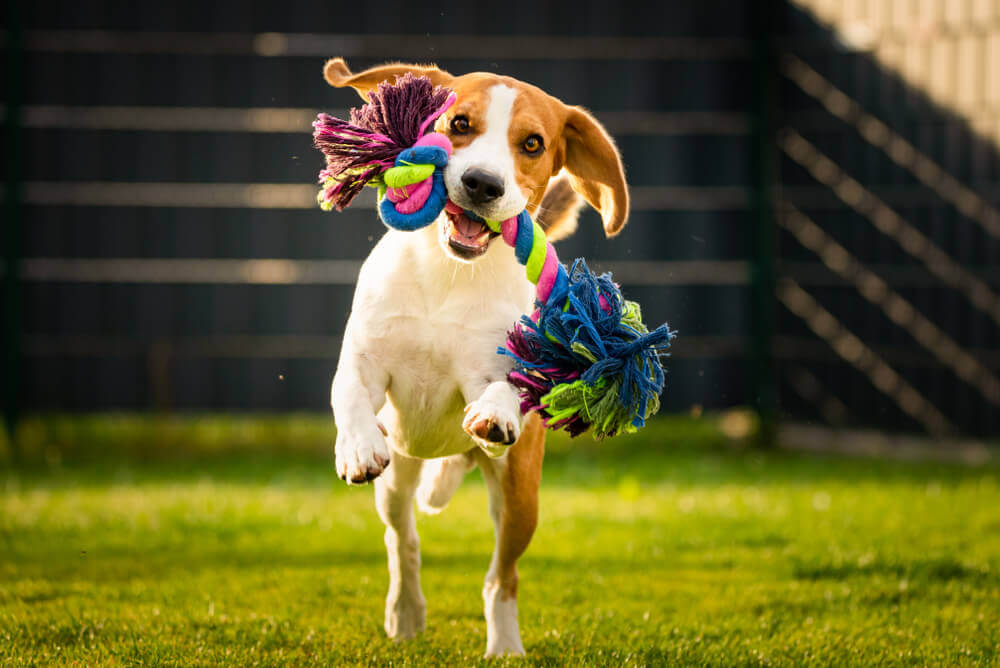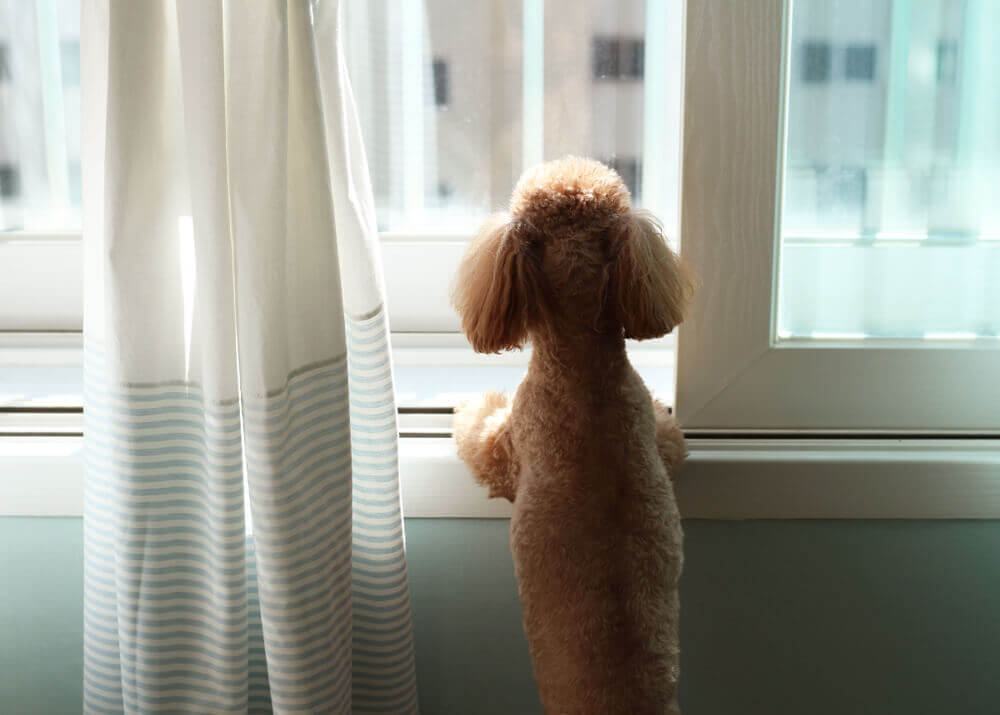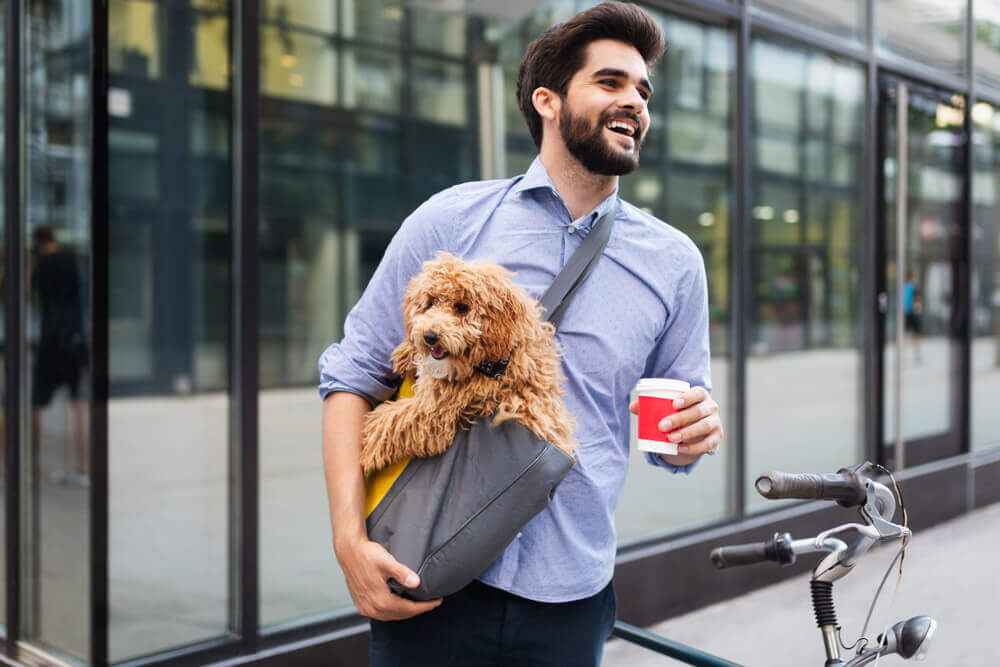The plans have been made, the date is set, you are officially returning to the office (at least in some capacity). Within your mix of emotions is likely trepidation and uncertainty for your pup, your constant companion. How will they respond to this change? How can you help them cope? Here are a few steps you can take to ease your pup into their new normal.
Daily Routine While In The Office
Dogs benefit from structure and predictability in their days, especially for the most important activities: eating, exercising, playing and pottying. Before you can help your dog adjust to your new normal, you have to decide what that new normal looks like.
- What time do you plan to wake up, feed your pup, go on walks, leave for work, come home and go to bed?
- What do you bring to the office and how do you leave the house (lights and temperature settings)?
- Where and how will your dog be while you are gone all day: free roaming, in a designated room, in a crate?
While thinking through your new normal, consider whether there is anything from your current lives that can be carried over: a midday walk, extra play session or an evening cuddle?
Enrichment

Enrichment is providing your dog with mental and physical stimulation which meets their species’ specific needs – think sniffing, fetching and foraging. Meeting these needs will help prepare your pup for a long snooze while you are at the office (believe it or not – dogs actually need 12-14 hours of sleep a day!).
Before heading out the door consider a run, a brisk walk, a vigorous game of tug or a rousing game of fetch. If you have neither the time nor the energy first thing in the morning, focus on mental enrichment: go on a long sniff walk (let your pup sniff to their heart’s content without pulling them along), give them breakfast in a puzzle feeder or do some training!
You can also up your enrichment game while you are out of the house. Use your pup’s love of food to your advantage! As you are leaving, give them stuffed food toys, food puzzles, or cardboard boxes and bags stuffed with treats then closed or taped up (but only if your dog won’t eat the containers). You can also establish a toy rotation since, much like people, dogs will get bored of the same toys day in and day out. If you put the toys away and bring them back a few weeks later, they may as well be new. You can even add some easy auditory stimulation by leaving on a tv show, an audiobook or music (research has shown that dogs have individual tastes in music, but that reggae, soft rock and classical have the most universal calming effects).
Transition Slowly From Home to Office
You’ve decided on your new routine, awesome! Ummmm, now what? Slowly make changes, starting with the easiest to swallow, well easiest for your dog at least: wake up time, morning routine and meal times. Then start to shift the time of your dog’s activities (walks, play time, enrichment).
Once your new routine is established, start to leave your dog alone, but not too much too quickly. Start with a few hours at a time. Follow your leaving routine, including any exercise or enrichment as you leave. If your dog has been by your side 24/7 for the past year, start by closing the door while you go to the bathroom or shower. Then build up to a walk around the block, then a short drive to the store before leaving them for hours at a time.
Make small changes to your daily routine and then increase the duration and intensity of these changes slowly. Before you take the next step forward, make sure your pup is comfortable with your current changes. The last thing you want is an uncomfortable, tense or anxious pup.

Leaving and Coming Home From The Office
Dogs are expert human body language analysts who will pick up on the slightest stress and anxiety. So, be sure to take the stress and anxiety out of departures. Take a deep breath, give your dog some enrichment, say a quick goodbye and walk out of the door.
Same routine when you come home. Yes, you are OVERJOYED to see your dog at the end of the day, but scream on the inside. If you are over the top excited, you can cause some anxiety & unwanted behavior surrounding your return. No one is saying ignore your dog when you come home. On the contrary, be responsive to your dog’s needs, but don’t make your dog responsive to yours. Greet your dog with love & affection, but maybe not a massive reunion party.
Shifting To That New Normal
Shifting to your new normal is a process, and may take some time to get used to, for both of you. Some dogs can take up to four weeks to adjust to a new routine, and some will be perfectly fine on day one. Give yourself and your pup the gift of time and patience. However, if your dog engages in any destructive behavior, self-injurious behavior or excessive barking, shaking or panting over a long duration of time it’s best to call a certified behavior professional.




















